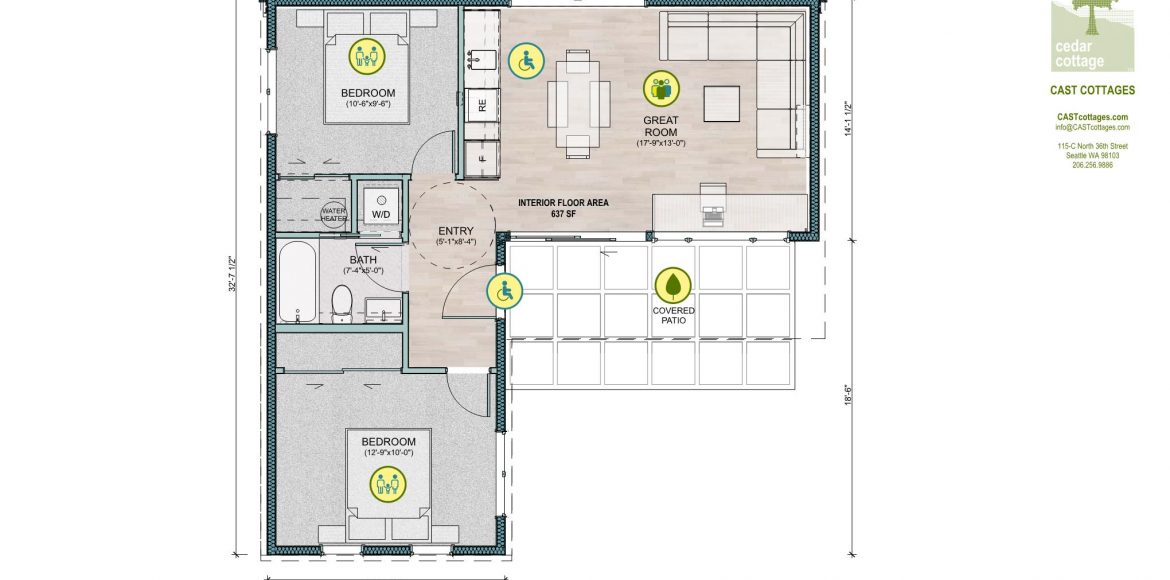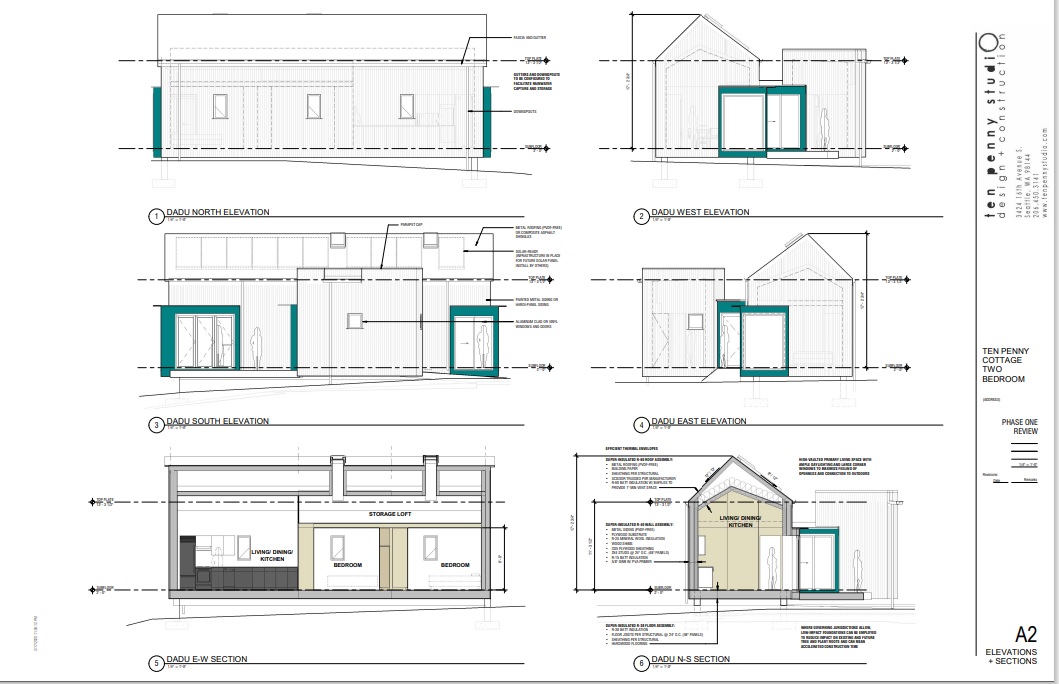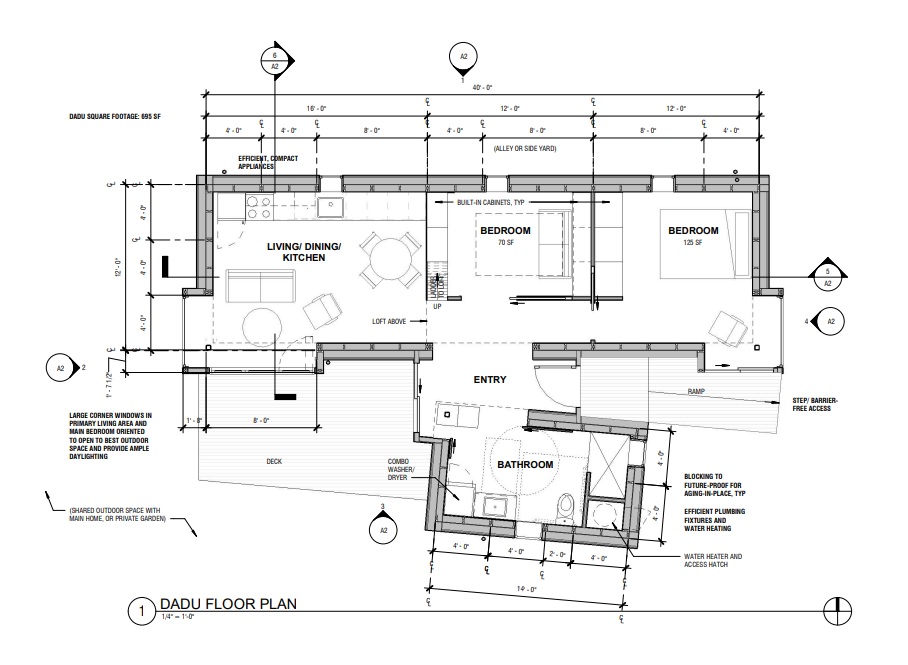DADU
A legally permitted unit on the property (but not within the home) is called a detached accessory dwelling unit (DADU) or backyard cottage. Tiny houses, with foundations, are considered DADUs.
BACK TO SERVICES

Pre-Approved ADU, DADU plans
Note: Tiny houses on wheels are treated like camper trailers. You cannot live in a tiny house on wheels (or similar equipment such as RVs and boats) on lots in Seattle city limits. If your tiny house has wheels you need to follow parking rules for large vehicles.
The Office of Planning and Development (OPCD) launched the ADUniverse website in September 2020. The ADUniverse features a gallery of pre-approved DADU designs, a step-by-step guide to the ADU process, and a search tool to identify the feasibility of adding an ADU to your property. Created by local designers and architects, the 10 pre-approved building plans offer a faster, easier, and more predictable permitting process for creating a DADU. In most cases, you can get your permit in just 2-6 weeks. See How To Apply for a Detached Accessory Dwelling Unit Using a Standard Plan for more information about the permitting process.

Seattle’s ADU Reform
In July 2019, Mayor Jenny Durkan signed legislation to remove regulatory barriers and make it easier for property owners to create accessory dwelling units (ADUs) in Seattle’s neighborhood residential zones. The new ADU regulations took effect on August 8, 2019.

What Permits Do You Need?
Adding within an existing house. You need a construction addition / alteration permit.
Building a detached unit. You need a construction addition / alteration permit.
Legalizing an existing unit. You need a construction permit to establish use.
You may also need to apply for electrical service changes or new services from Seattle City Light.

Research the Code
You can build these separate living spaces in a neighborhood residential or lowrise zone, and in some cases in neighborhood or commercial zones. Our codes limit the size and placement of your AADU or DADU.
Requirements for any accessory dwelling units:
- In NR3, NR2, and NR1 zones, up to two ADUs may be constructed. This can be either two AADUs or one AADU and one DADU. The second unit must meet specific criteria to either 1) meet green building standards or 2) be an affordable unit reserved for income-eligible households. In Neighborhood Residential Small Lots (RSL) and multifamily lowrise zones, only one attached or detached accessory dwelling unit is permitted for each single-family, rowhouse, or townhouse unit. ADUs are not allowed in apartments in lowrise zones, but are allowed in apartments in RSL zones.
- Parking is not required for ADUs. However, you cannot remove existing required off-street parking space(s) unless replaced elsewhere on the property in a location that is allowed under the code.
- The property owner is not required to live on the property where an ADU(s) is located.
- SDCI will report all accessory dwelling unit permits to King County for sewer treatment capacity charges. During your application, you will need to fill out a form acknowledging those capacity charges.
The main activity of the company is :
- ADU, DADU construction
- building of the garages, hangars,
- industrial floors, polishing of the concrete, industrial floors painting
- residential remodeling,
- building of decks and porches
- building patio
